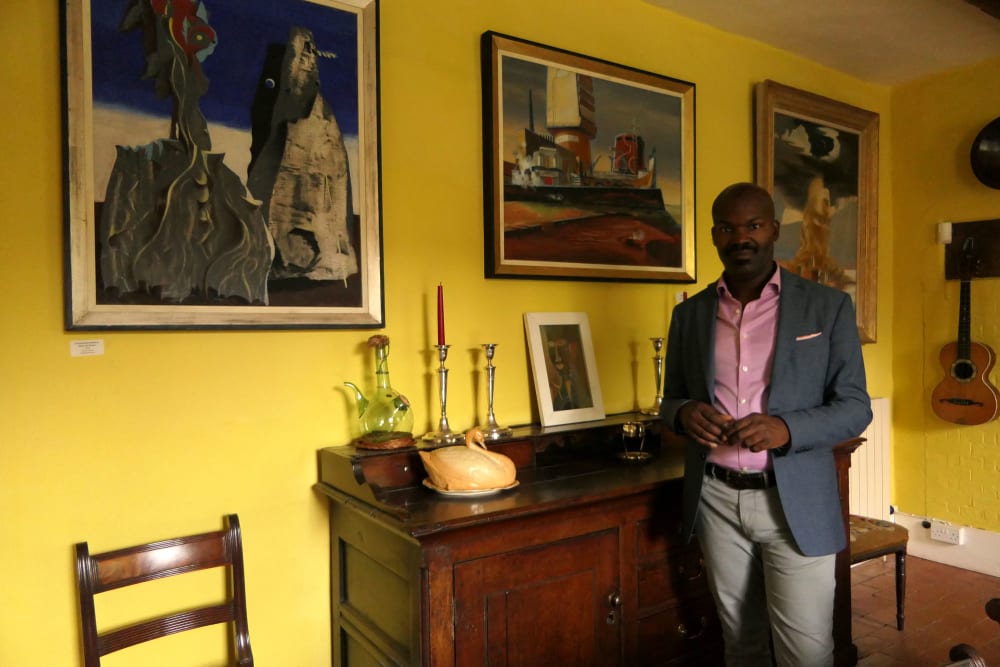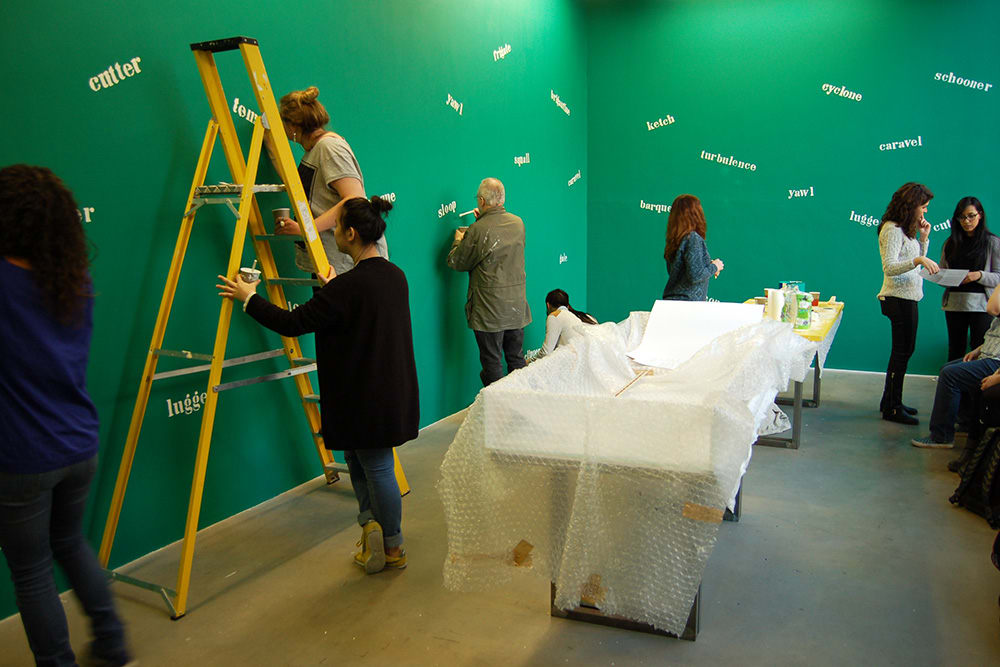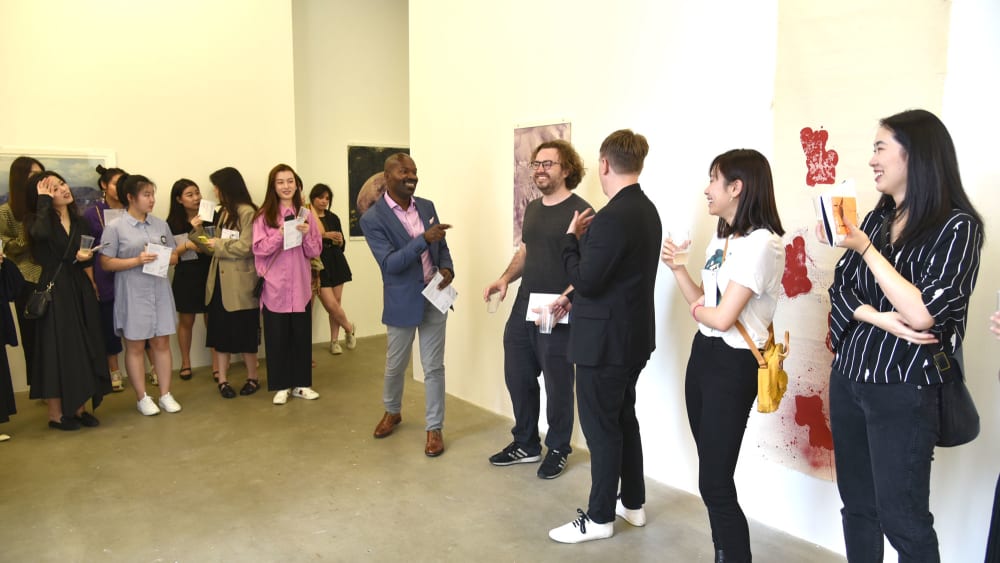Chelsea’s MA Curating and Collections course leader and UAL Reader in Museology, Dr David Dibosa will present an episode of new series of Art on the BBC to be broadcast this weekend.
Showing at on BBC4 at 9pm on Sunday 9 February 2020, The Many Faces of Picasso uses 6 decades of footage from the BBC archive to discover how television has influenced our understanding of the life and work of Pablo Picasso, an icon of modern art who was voted the greatest artist of the 20th Century by the BBC viewers in January 2019.
David trained as a curator. From 2015-2018 he was co-investigator for the landmark UAL and Middlesex University Black Artists and Modernism research project - a 3 year research project funded by the Arts and Humanities Research Council, examining how artists of African and Asian descent in Britain feature in the story of twentieth century art. David has also presented on television before: in 2017 he joined the BBC’s Big Painting Challenge television programme as one of the three judges for their second series.
We spoke to David about The Many Faces of Picasso, the role of the university in public debates about art and design and why he believes broadcast media has a unique role in our cultural life.

, Chelsea College of Arts, UAL | Photograph: Alleycats TV
Tell us about working on this programme. How does your work here at UAL influence and compliment your life as a presenter on the BBC?
Picasso has a big place in the public imagination. People know his work and can picture what he looks like - there are very few artists that people can do that with. So, it's a privilege to be able to talk to a broader public about his work.
As an academic, I think engagement with the public is essential because, as universities, we have a role to speak to the public in a way that no other institution can.
Of course, the broadcast media is a place where a lot of people interface with knowledge about subjects such as art and design - sometimes quite accidentally! You can be just channel hopping or sitting down in front of the television after a long day and suddenly you’re at a university – so working on programmes like this is important to me.

Can you tell us more about what you think is the role of the university in this public conversation?
Universities are public institutions. It’s our responsibility to ensure that people understand that we are still open to them as we re-shape ourselves in the 21st century. It’s important that we resist the temptation to turn inwards. We must keep our eyes on the prize of having a public mission.
I also think it’s important to ask just whose knowledge it is that our institutions are founded on: universities make a capital K out of Knowledge the same way that banks make a capital M out of Money and museums make a capital A out of Art.
Actually, it's everyday knowledge that allows us to build these institutions, just as it's everyday art practice - people just making things at home - that enables these massive museums and national art collections to grow. People's everyday wealth enables the banks to develop.
The danger is that people forget that that power is ours - it doesn't just belong to these institutions. Along the way I think people have become dispossessed and disempowered because we've forgotten that knowledge doesn’t just belong to universities: it's ours. I think it's time that the media gives us an opportunity to spread the message: art was always yours, this knowledge was always yours. Let's share it out again.
Your research specialism is in museology – the science and practice of organising, arranging and managing museums.
Is there a connection between this and the premise for this series of Art of the BBC, which is a kind of historiography – the study of historical narratives - through archives of television footage?
The structure of this series is fascinating: to try to get a sense of the way in which the public discussion of certain artists or artistic subjects has changed over time, reflected through footage held in the BBC archive. Indeed, the BBC has consistently been one of the major places where art gets discussed in broadcast media, and it was certainly one of the places where prominent art historians in the past were called to come and set out their opinions on these great artists.
Through making this programme and seeing the different art historians and how they themselves have changed over time, I found that that in itself tells a story.
By looking at who is invited to talk about art history and art itself, you can see that this was predominantly an elitist, white, male practice, certainly to begin with. Kenneth Clark was one of the first great, popular historians on television. Then, over the years, you can see that it changes slightly. It's still stays white and male, but it shifts: John Berger comes along and Robert Hughes, then in more recent times you have people like Andrew Graham Dixon. The programme works all the way through to today, reflecting how much things have changed. Now we have people like Kate Bryan and Mary Beard – women! At last! - gaining a more public profile.
It is interesting to get that sense of those who are able to talk about art and, more importantly, who has been allowed that platform.

, Chelsea College of Arts, UAL | Photograph: Chelsea Space
Is that something you can talk about in the context of your work teaching on MA Curating and Collections? Your students are the next generation of art historians, curators and keepers of museum collections.
Initiatives that we have started here at Chelsea such as the Iniva Scholarship enable us to bring different kinds of people into this field in order to ensure that the conversation becomes more pluralised. It’s so important because we need more voices to take part in the conversation, to open it up.
The students at Chelsea are brilliant - they're intelligent, creative and engaged and it's wonderful to work with them but in terms of access we need to do more to open those doors more widely. UAL, like many universities are aware of this and are committed to addressing it.
To make the changes we need, we must be absolutely scrupulous, on the one hand; look the world in the eye directly and see it for what it is. On the other, we must see the possibilities and have the confidence and the courage to be hopeful and optimistic about the way in which we want to reshape the world.
I think that, as people working in art and design, we are on the frontiers of the imagination. Our role is to say to people: dare to dream. Those of us who work in and alongside these institutions - designers, artists, makers, performers – we can apply our creativity to develop and present possibilities for other ways of being, as well as to remind other people that it's possible, that they too have an imagination that matters, filled with ideas worth sharing.
With the pressures of daily life such as they are, it can be easy for people to forget their dreams, the ideas that could lead to change. But when you walk into an art school, or a museum or a place like Tate, you are suddenly reminded that the dream world does exist.
Watch The Many Faces of Picasso on BBC4 on Sunday 9 February, 9pm, or catch up on iPlayer on the BBC website.
Find out more about MA Curating and Collections

